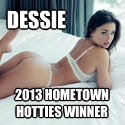Games Home / Entertainment Channel / Bullz-Eye Home
 Buy your copy from Amazon.com
Buy your copy from Amazon.com
| High Heat 2003
     Publisher: 3DO
Publisher: 3DO Category: Sports Available for: PlayStation 2, PC  |
As any fan will tell you, the crux of a great sports video game is its level of realism. From the stadiums and the stances to the uniforms and the rosters, a sports game that doesn’t closely mirror the action on the field just doesn’t have much appeal on the TV screen.
While "High Heat 2003" certainly hits a few potholes on the realism highway, 3DO has managed to transfer most of the action from the diamond to the console. The graphics are, as expected, fantastic, the play-by-play commentary is solid and, with the inclusion of some of baseball’s quirkiest nuances, you can almost feel the pine tar on the controller and hear the beer vendors roaming the stands.
Each game starts with a virtual tour of the home stadium, complete with sweeping camera angles and a look at each park’s unique characteristics, from the trees behind the centerfield fence at Jacobs Field, to the pool in right field at Bank One Ballpark and impressive skylines for several other parks.
Of course, it’s the game play that separates mediocre sports games from the truly elite ones, and "High Heat 2003" definitely delivers here. Diving stops, leaping catches and beautifully turned double plays are all executed with relative ease, which isn’t to say these are common occurrences; rather, a home run-saving catch and a 6-4-3 twin killing can be completed with just the tap of a couple buttons.
Pitching is also fairly simple, beginning with the pitch selection, a list that obviously varies from one hurler to the next. After choosing whether you’d like the pitch to be a ball or a strike, you then have the ability to move the ball inside, outside, up or down, making it easier to induce ground balls and fly balls or to waste a pitch, hoping to get the batter to chase a ball in the dirt.
Needless to say, throwing a strike on the outside corner with a pitcher who has impeccable control is a much easier task than trying to throw one on the black with an erratic youngster. Unfortunately, while using someone like Pedro Martinez can actually make pitching an enjoyable experience in this game because the ball pretty much goes where you want it to go, you can quickly find yourself in trouble with a lesser pitcher -- trying to throw that inside strike with Russ Ortiz or C.C. Sabathia, two guys who surrender a ton of walks, is nearly impossible. While the makers of the game had their hearts in the right place, this sometimes unbelievable wildness often forces you to throw a meatball down the center of the plate just to get a strike, a situation that many times leads to titanic home runs and scorched doubles in the gap.
This isn’t my only complaint about this otherwise entertaining game. When one of your players suffers an injury, you obviously have to replace him in your starting lineup. But, unless I just missed it (which would then raise the issue of accessibility) you can’t see how long your player is expected to be out -- some injuries are of the day-to-day variety while others are season-ending. And since you may have to pull off a trade or sign a free agent to offset the loss of a player, it’d be nice to know if you’re looking for a short-term solution or a permanent sub.
Speaking of trades, one of the highlights of any sports game is swinging deals for your favorite players or shipping out a dud you just can’t stand -- in other words, you have the power to make up for any mistakes your team’s general manager made in real life. You’re the virtual boss. But with "High Heat," you’re pretty much handcuffed when it comes to trading with other teams because you’re limited to simple one-for-one deals, and as any aspiring GM will tell you, the best trades are those complicated six- and seven-player swaps. Plus, there’s no computer override involved here, meaning you can trade someone like Rey Ordonez for Barry Bonds. What’s the fun in that?
Finally, and this is a minor complaint, any baseball fan knows that a normal weekend series begins on a Friday and ends on a Sunday. Sometimes they’ll kick off a four-game set on Thursday or end it on Monday. However, team schedules for "High Heat" seem to be a day off -- weekend series begin on Saturdays instead of Fridays, while off days, which fall on Mondays and Thursdays, are also shifted one day to Tuesdays and Fridays. Obviously, this has absolutely no effect on game play, but as I stated earlier, true sports fanatics look for high levels of realism from video games like "High Heat," and for the most part this version delivers. Nonetheless, this is still a glaring, although minor, oversight by 3DO.
But no game is perfect, and "High Heat 2003" is no different. Of all the baseball video games I’ve played over the years, however, this has to rate as one of the better editions. The uncomplicated game play combined with the presence of such features as double-switches, appeals on check swings, mound visits, and the need to warm up your relievers before throwing them on the mound nearly cancels out my minor criticisms. Still, here’s hoping "High Heat 2004" will be tweaked just a little bit because if there is in fact a strike this season, that may be the only chance we’ll have of seeing any baseball next summer.
~Jamey Codding
jameycodding@bullz-eye.com








